While modern cookware boasts nonstick coatings and sleek designs, vintage pieces have a charm and durability that today’s products often can’t match. Many professional chefs and home cooks alike are rediscovering these timeless kitchen staples, valuing their craftsmanship, unique features, and ability to elevate cooking. Some of these once-forgotten items are now highly sought-after, commanding high prices at auctions, antique stores, and estate sales. If you come across any of these vintage cookware treasures, you may want to hold onto them—or cash in on their newfound popularity.
Cast Iron Skillets (Pre-1950s)

Vintage cast iron skillets, especially those made by brands like Griswold and Wagner, are highly prized for their smooth surfaces and superior heat retention. Unlike many modern versions, these skillets were polished to a glass-like finish, making them naturally nonstick with proper seasoning. They’re incredibly durable and can last for generations, often cooking better with age. Collectors and chefs alike are willing to pay top dollar for well-preserved or restored pieces.
What makes these skillets so valuable is their craftsmanship and weight balance. Modern cast iron tends to be rougher and heavier, whereas older skillets are lighter and easier to maneuver. The manufacturing process from the early 20th century produced a quality that’s difficult to replicate today. If you find one at a thrift store or garage sale, it might be worth much more than you think.
Copper Cookware (French-Made)
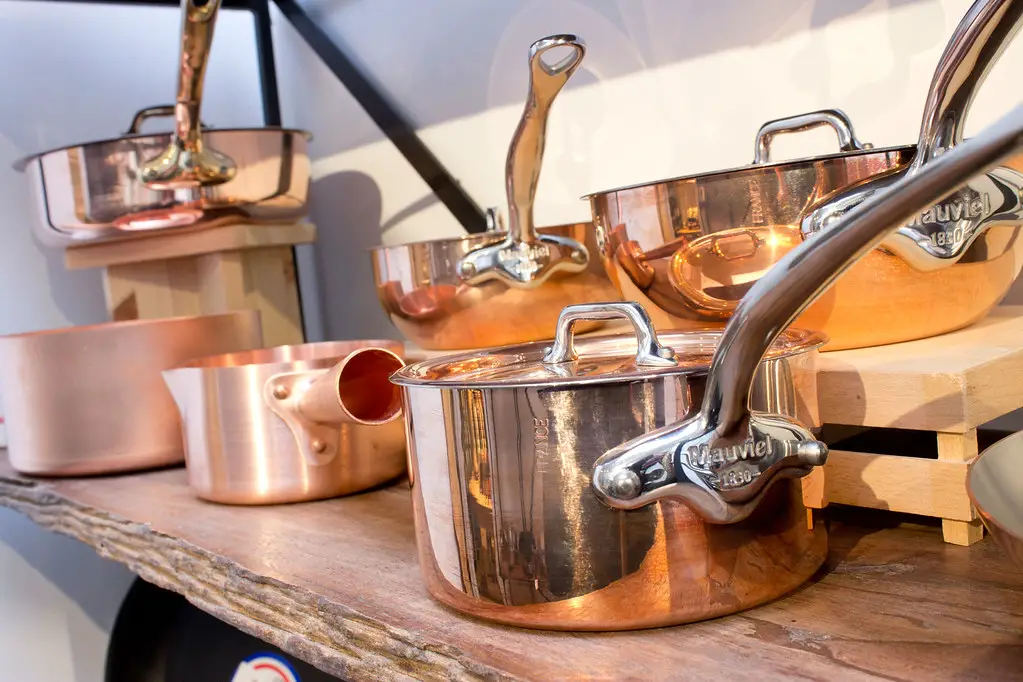
Antique French copper cookware, especially brands like Mauviel and Dehillerin, is a staple in high-end kitchens. These handcrafted pieces provide excellent heat conductivity, allowing for precise temperature control that serious chefs appreciate. However, true vintage copper cookware requires maintenance, such as regular polishing and occasional re-tinning of the interior. The effort is worth it, as well-maintained pieces can sell for thousands.
Unlike modern versions, older copper cookware is often made of thicker, heavier-gauge copper, ensuring even heat distribution. Many collectors seek out copper pots and pans with iron or brass handles, which add to their authenticity and aesthetic appeal. Because these pieces were often used in professional kitchens, they’ve stood the test of time. If you inherit a set, you may be holding onto a valuable piece of culinary history.
Pyrex Primary Color Mixing Bowls (1940s-1960s)
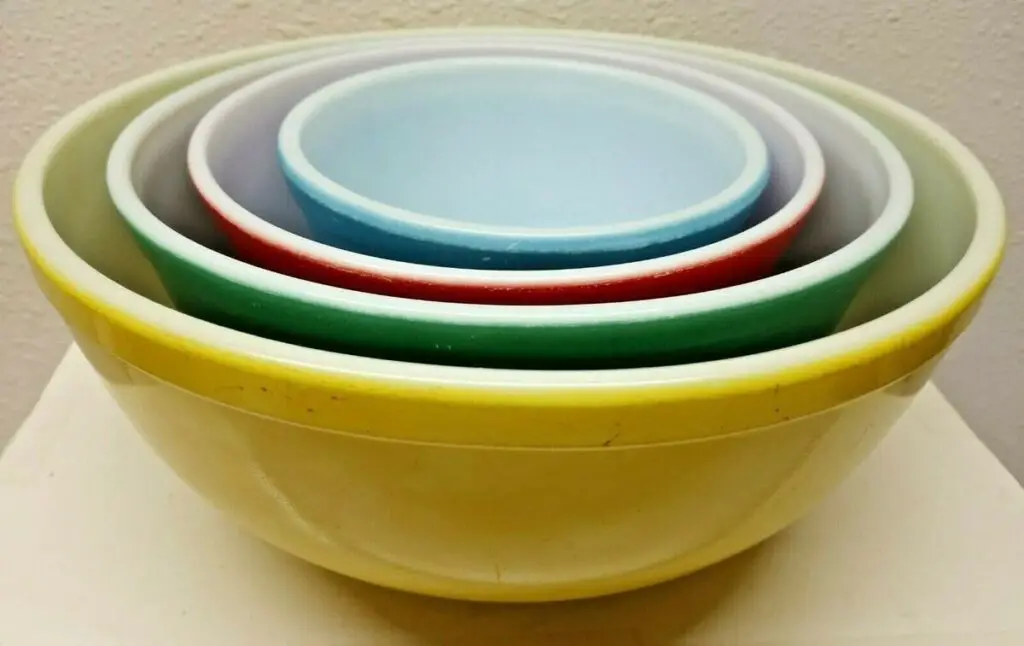
These brightly colored Pyrex mixing bowls are instantly recognizable and have become a must-have for collectors. Originally produced in the 1940s and 1950s, they were built to last, with vibrant hues that resist fading. The set typically includes four nesting bowls in red, blue, green, and yellow, making them as stylish as they are functional. Pristine sets can sell for hundreds, especially if they still have their original shine.
Aside from their aesthetic appeal, these bowls are incredibly durable and versatile. They can go from mixing batter to serving salads, and their thick glass construction makes them resistant to cracks and chips. Many families passed them down through generations, which adds to their nostalgic charm. Today, collectors scour thrift shops and online marketplaces to complete their sets.
Fire-King Jadeite Dishes and Bakeware
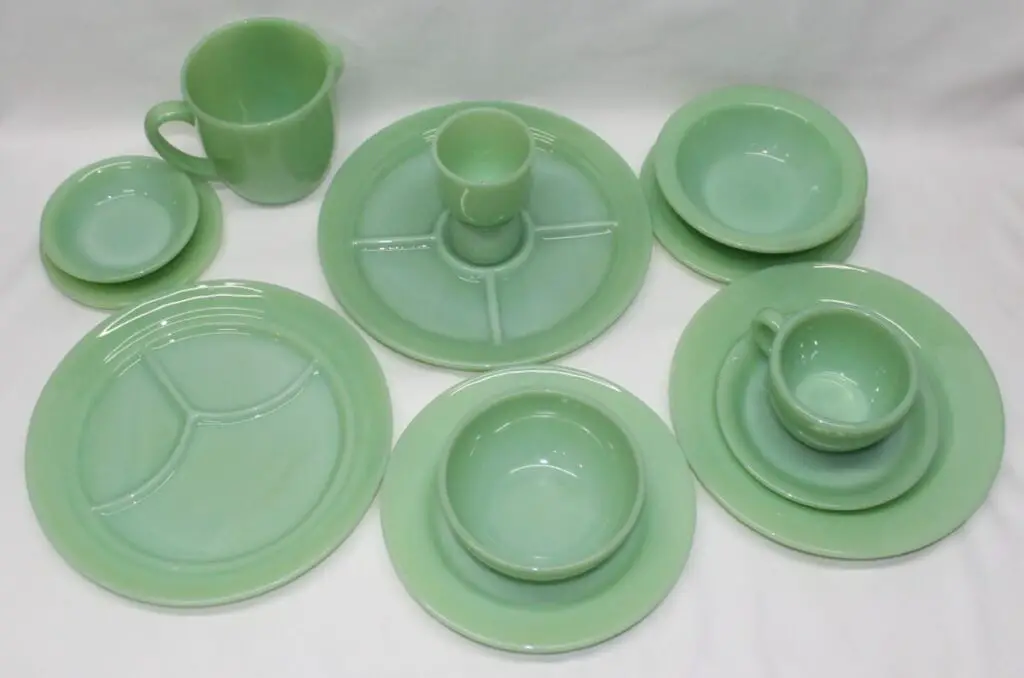
Jadeite, the milky-green glassware produced by Fire-King in the mid-20th century, has skyrocketed in value over the past few decades. Originally marketed as affordable, everyday kitchenware, these pieces are now sought-after collectibles, especially those with restaurant stamps or unique markings. Mixing bowls, measuring cups, and mugs in this signature green shade can fetch impressive prices. Certain rare patterns and stamps can push values even higher.
Chefs love using vintage Jadeite because it’s oven-safe and incredibly sturdy. Unlike some modern glass bakeware, these pieces were built to withstand heavy use. The demand has surged thanks to nostalgic home design trends, and many collectors are willing to pay premium prices for authentic, well-preserved pieces. If you come across a Jadeite dish, check the bottom for a Fire-King stamp—it might be worth more than you expect.
Revere Ware Copper-Bottom Pots (Pre-1968)
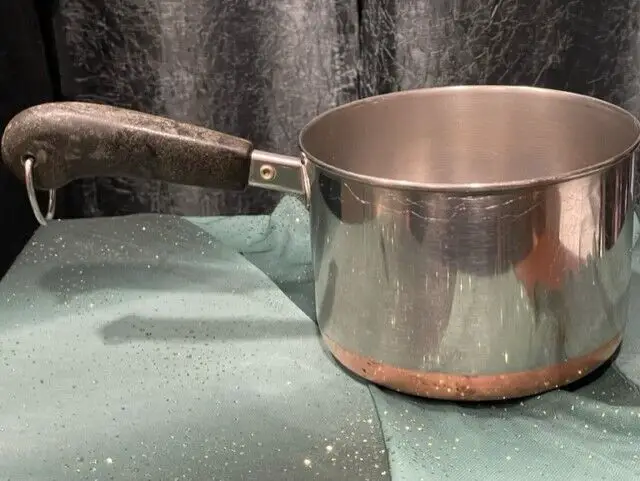
Before 1968, Revere Ware was manufactured with heavier copper bottoms, providing superior heat distribution. These pots and pans were a staple in American kitchens, known for their durability and classic look. While modern versions exist, they don’t compare to the quality of earlier production runs, making vintage pieces highly collectible. Well-maintained sets can be worth significantly more than their original retail price.
What sets these apart is their excellent performance and lightweight construction. Unlike heavier copper cookware, Revere Ware strikes a balance between practicality and functionality, making it a favorite among vintage cookware enthusiasts. The copper base helps prevent hot spots, allowing for even cooking, which is why many chefs still swear by them. If you find an older set with solid copper bottoms, it’s likely a valuable piece of culinary history.
Vintage Enameled Dutch Ovens (Le Creuset & Descoware)
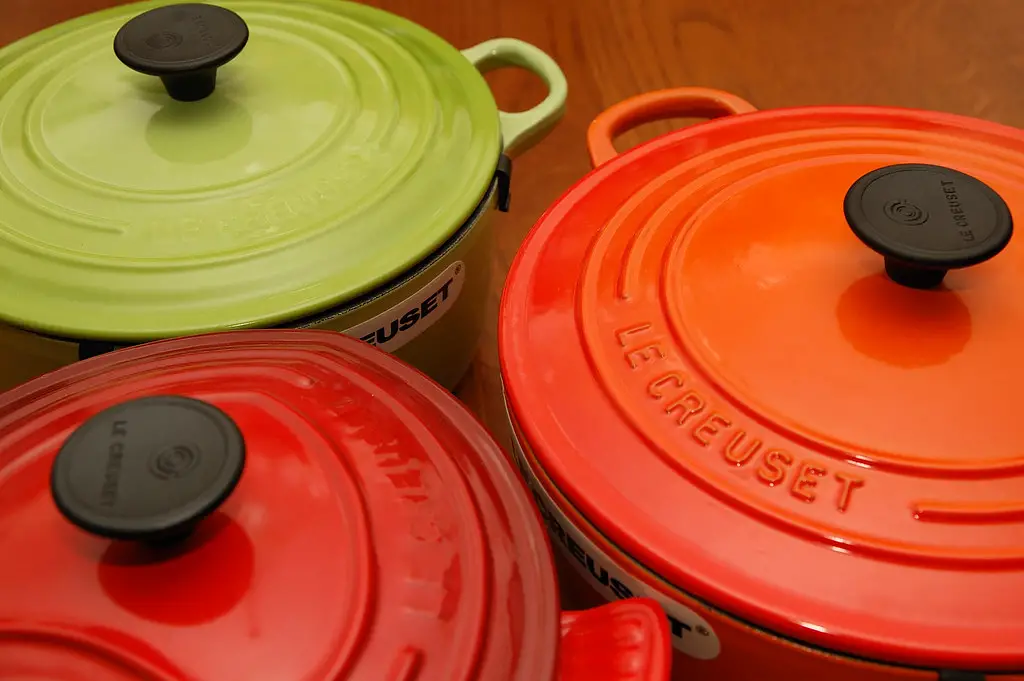
Le Creuset and Descoware Dutch ovens from the mid-20th century are now considered culinary gold. Their vibrant colors, excellent heat retention, and heavy-duty cast iron construction make them a staple in professional and home kitchens alike. Unlike some modern enameled cookware, these vintage pieces were built with thicker enamel coatings, reducing the risk of chipping and wear. If you find one in good condition, it could be worth a small fortune—especially rare colors like turquoise or flame orange.
These Dutch ovens were often handed down through generations, making them sentimental heirlooms as well as functional kitchen tools. The even heat distribution makes them perfect for slow-cooking stews, baking bread, or braising meats. While many modern brands attempt to replicate the quality, true vintage pieces retain their value due to superior craftsmanship. Collectors eagerly search for well-preserved originals, sometimes paying hundreds or even thousands for the right piece.
Mid-Century Aluminum Bundt Pans (Nordic Ware)

Vintage Nordic Ware Bundt pans from the 1950s and 1960s are prized by bakers and collectors alike. These heavy-duty aluminum pans were made with thicker walls than their modern counterparts, ensuring an even bake and a crisp, defined shape for classic Bundt cakes. Some of the rarer shapes and designs, such as the “Fleur de Lis” or “Cathedral” molds, can command high prices among enthusiasts. If the pan has the original Nordic Ware stamp on the bottom, it’s even more desirable.
What makes these Bundt pans special is their durability and baking performance. Unlike newer versions, older Nordic Ware pans developed a natural patina over time, helping cakes release effortlessly. Many vintage bakers swear by their tried-and-true Bundt pans, claiming modern versions just don’t compare. If you find one at a yard sale or tucked away in a family kitchen, it could be a valuable and functional piece of baking history.
Wagner & Griswold Cast Iron Muffin Pans

While most people associate cast iron with skillets, vintage cast iron muffin pans are just as desirable. Produced by legendary brands like Wagner and Griswold in the early to mid-1900s, these muffin tins are prized for their nonstick properties and even heating. Unlike modern nonstick muffin pans, which can wear down over time, cast iron versions improve with age. Well-seasoned pieces can produce perfectly baked muffins, cornbread, or Yorkshire puddings.
These pans are not just collectibles—they’re still incredibly practical. Many bakers prefer them because they distribute heat evenly, ensuring golden-brown results every time. Unlike flimsy aluminum or silicone pans, cast iron muffin tins last for generations with proper care. If you spot one at an estate sale, snatch it up—it’s likely to be worth much more than its original price.
Vintage CorningWare Blue Cornflower Casserole Dishes
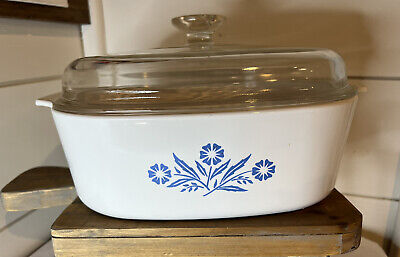
CorningWare’s Blue Cornflower pattern, first introduced in 1958, remains one of the most iconic cookware designs of all time. These white, glass-ceramic casserole dishes with blue floral accents were a staple in mid-century kitchens, known for their durability and ability to go from freezer to oven without cracking. Today, collectors eagerly seek out full sets, especially ones with matching lids and original markings. Some rare pieces can sell for hundreds of dollars.
Unlike many modern ceramic dishes, vintage CorningWare was made from Pyroceram, a material originally developed for military use. This made it virtually indestructible, resistant to extreme temperature changes and everyday kitchen mishaps. Many home cooks still swear by their vintage CorningWare, claiming it outperforms newer versions. If you come across a pristine set, it could be both a nostalgic treasure and a valuable collector’s item.
Aluminum Cake Pans & Cookie Sheets (Pre-1970s)

Before the rise of coated nonstick bakeware, aluminum cake pans and cookie sheets were the gold standard in baking. Vintage brands like Wear-Ever and Mirro produced high-quality aluminum bakeware that provided superior heat conductivity, ensuring even baking results. These pans didn’t warp under high heat like many modern thin aluminum sheets, making them a favorite among professional bakers. Collectors now seek out vintage aluminum pans for both their functionality and retro appeal.
Many bakers prefer these classic pans over modern versions because they develop a natural nonstick surface over time. Unlike coated bakeware, which can scratch or degrade, vintage aluminum remains reliable for decades. Some rare sizes and specialty designs, like angel food cake tubes or jelly roll pans, are especially valuable. If you have a well-used aluminum baking pan in your kitchen, it’s likely worth more than you think.
Antique Butter Churns & Hand-Crank Mixers
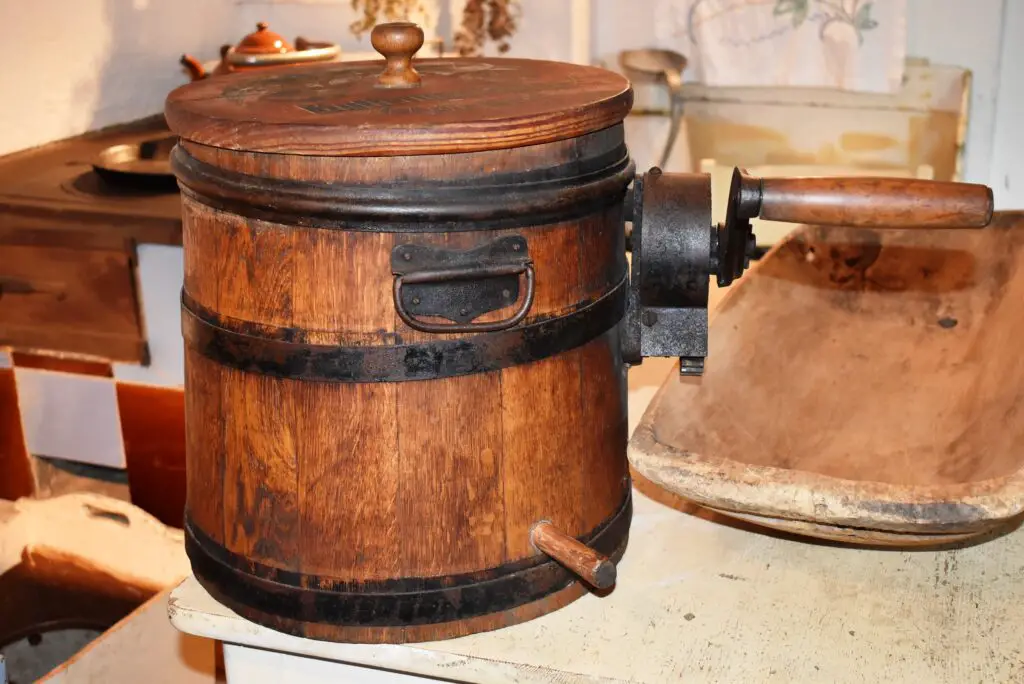
While not technically cookware, vintage butter churns and hand-crank mixers were once essential kitchen tools. Early 20th-century butter churns, especially glass or wooden barrel styles, are highly collectible among antique kitchen enthusiasts. Similarly, hand-crank egg beaters from brands like Dover and Androck are prized for their nostalgic appeal and craftsmanship. These old-fashioned kitchen tools still function surprisingly well, making them both display-worthy and practical.
What makes these items so special is their historical significance. They represent a time when home cooking and baking required more manual effort, yet the quality of results was often superior. Many collectors display them in farmhouse-style kitchens, while others use them for old-fashioned baking and cooking. If you find one in good condition, it could fetch a surprising price at an antique shop or online marketplace.
Depression-Era Glass Cake Stands & Serving Dishes

Depression glass cake stands and serving dishes, often in pastel colors like pink, green, and blue, have become highly collectible. These delicate yet durable pieces were once given away as promotional items during the Great Depression, making them an affordable luxury at the time. Today, their intricate patterns and vintage charm make them highly desirable, with some rare designs selling for hundreds. Collectors particularly value cake stands with pedestal bases and unique etched patterns.
Beyond their beauty, these cake stands are still functional for displaying desserts in style. Unlike modern glassware, which is often mass-produced, vintage depression glass was carefully crafted, resulting in stunning and unique pieces. Many bakers and entertainers seek them out for vintage-inspired events and tea parties. If you inherit a set, it could be a valuable piece of both family and culinary history.
Hand-Hammered Aluminum Serving Trays (1930s-1950s)
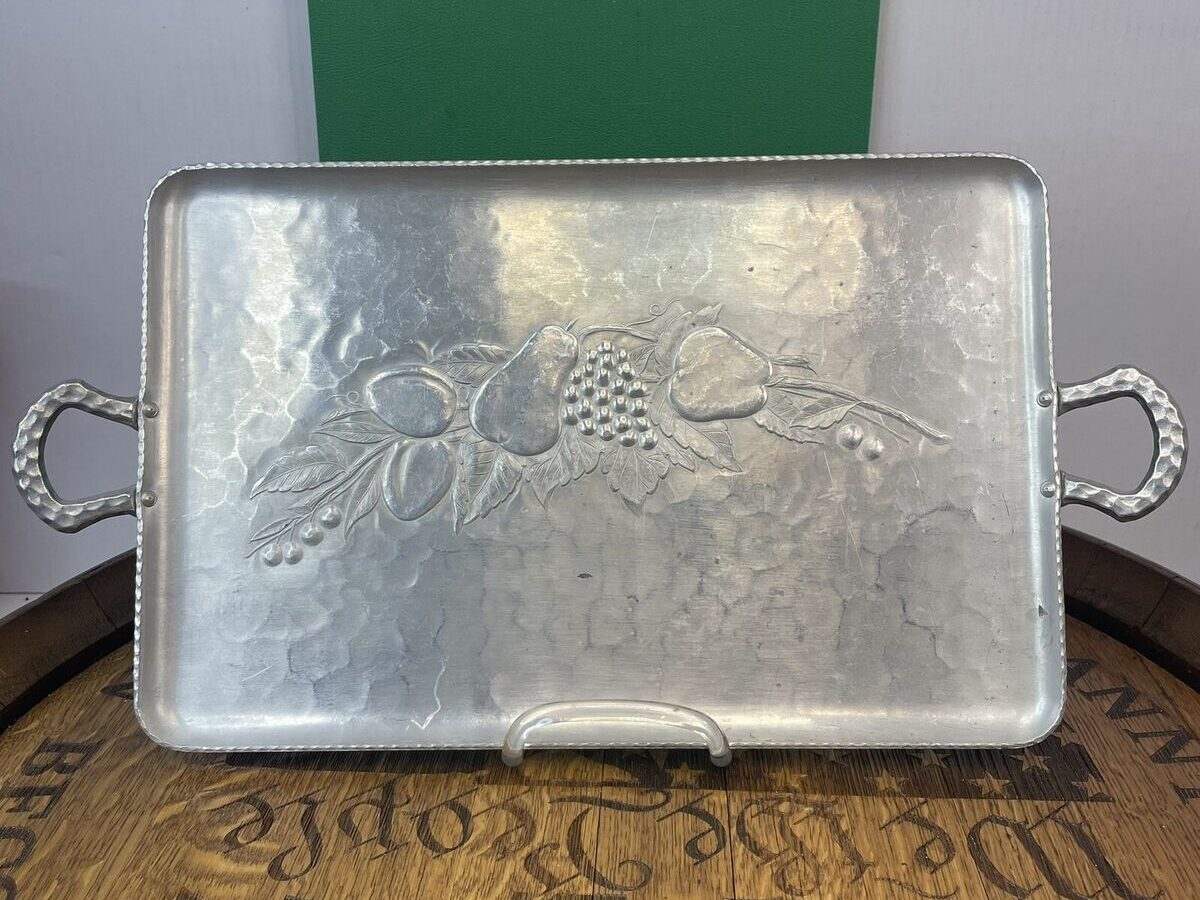
Hand-hammered aluminum serving trays and platters from brands like Rodney Kent and Arthur Armour are becoming sought-after collectibles. These mid-century pieces feature intricate floral and scrollwork designs, making them both decorative and functional. Originally sold as affordable alternatives to sterling silver, they have since gained value for their craftsmanship and nostalgic charm. Larger pieces, such as punch bowls or serving trays, are particularly valuable.
One reason these trays remain popular is their lightweight durability. Unlike delicate china or silver, aluminum doesn’t tarnish and is easy to maintain. Many collectors appreciate their mid-century aesthetic, using them as both kitchen décor and serving pieces. If you find a well-preserved set, it might be worth far more than its original price tag.
Vintage Coffee Percolators (Pre-1970s)

Before the rise of drip coffee makers and pod machines, percolators were the standard for brewing rich, flavorful coffee. Vintage percolators, especially those made of heavy-duty stainless steel or enameled metal, are making a comeback among coffee lovers. Brands like Pyrex, Farberware, and Wear-Ever produced high-quality models that remain functional decades later. Some rare or stylish designs, such as those with Bakelite handles, can fetch high prices from collectors.
Coffee enthusiasts praise vintage percolators for their ability to brew strong, aromatic coffee that modern machines often fail to replicate. Unlike plastic-based coffee makers, these vintage models are built to last, with no risk of lingering flavors from previous brews. Many people are rediscovering the charm of percolated coffee, fueling demand for well-preserved vintage models. If you have an old percolator gathering dust, it might be worth brewing a cup—or selling it for a premium.
